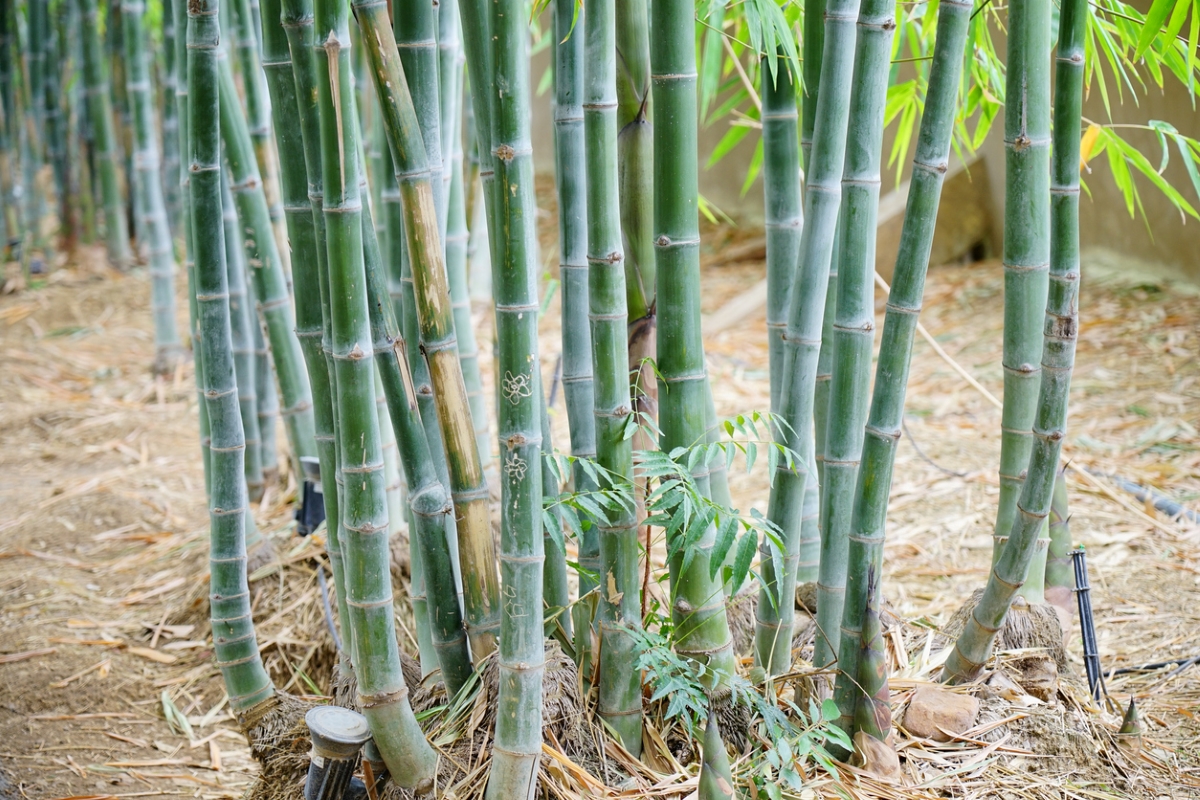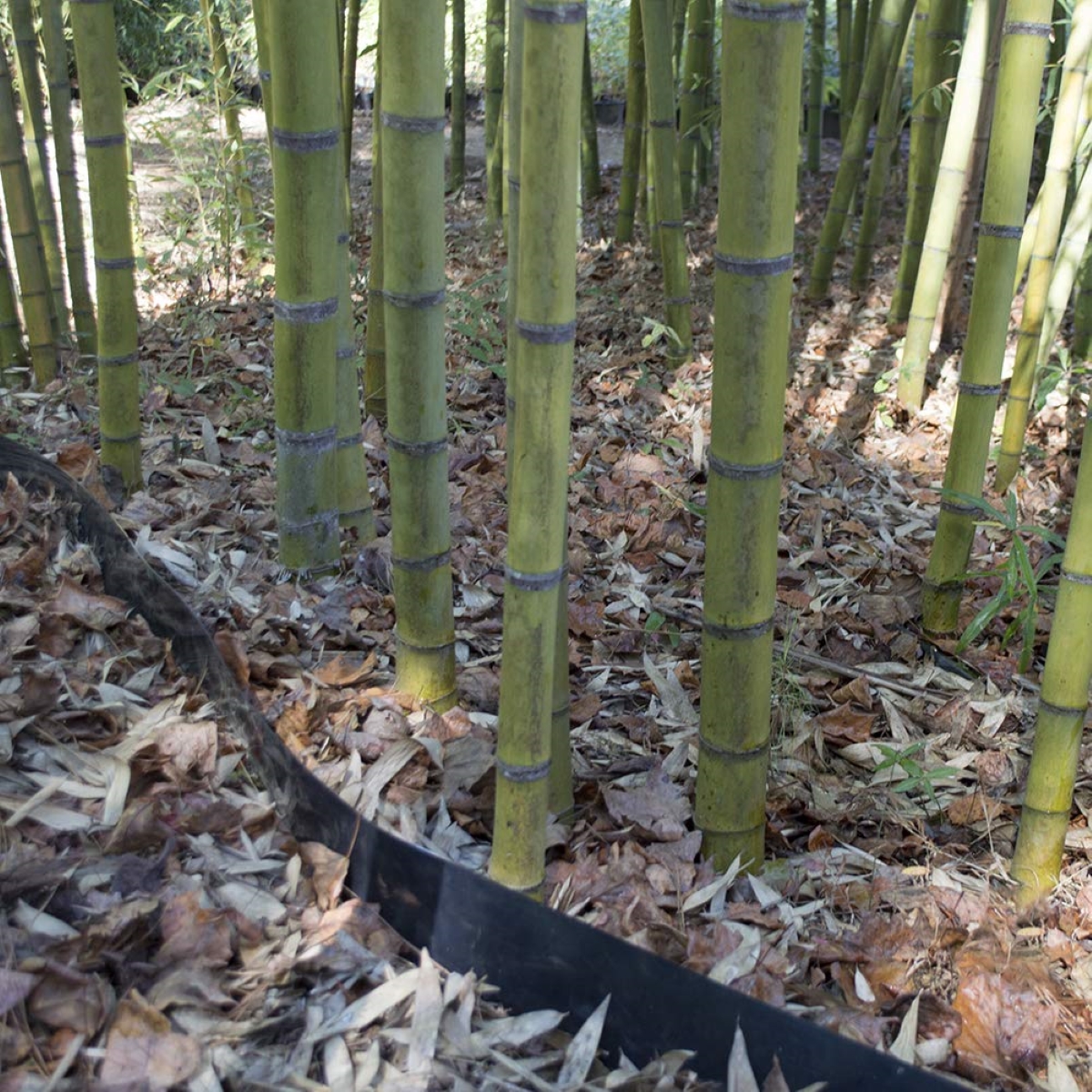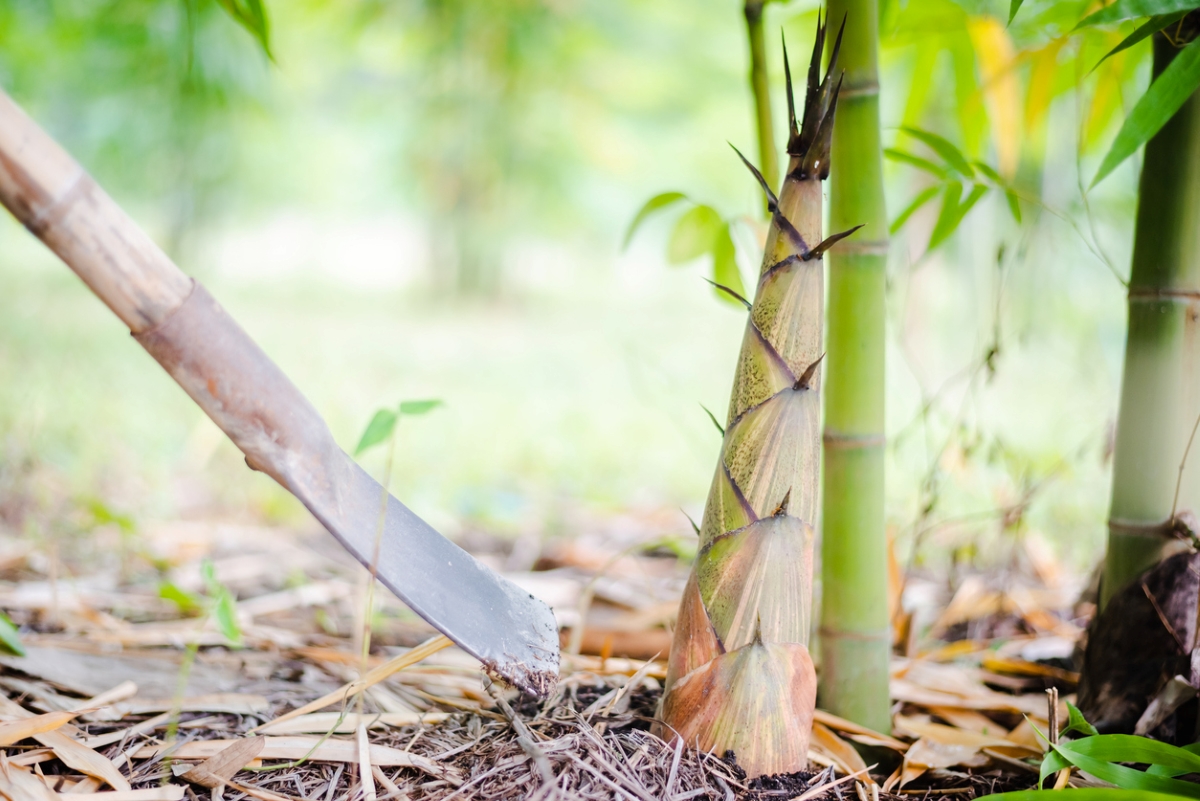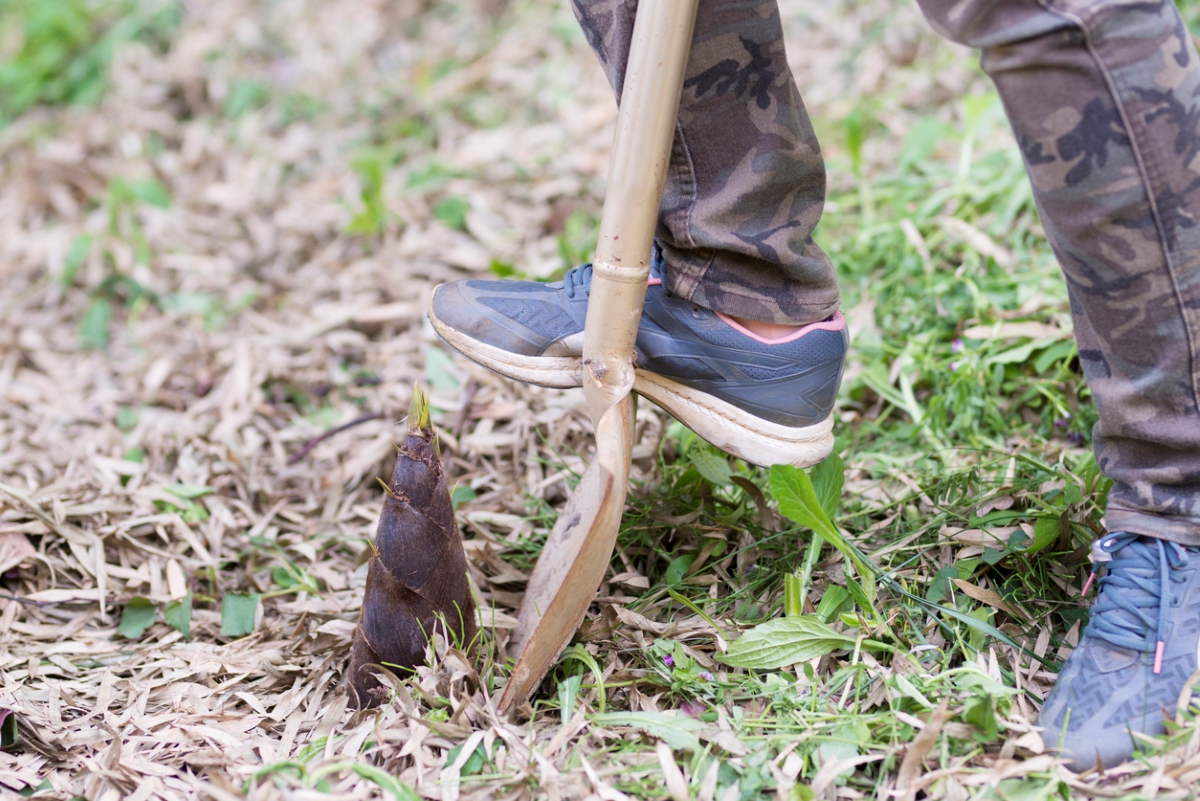

We may earn revenue from the products available on this page and participate in affiliate programs. Learn More ›
Clumping bamboos such as Fargesias don’t pose a problem, as they stay pretty much in place. It is the running invasive bamboo in the genera Bambusa, Phyllostachys, Pleioblastus, and Pseudosasa that will run you ragged. Although their roots usually don’t extend more than 12 to 18 inches deep, they are difficult to dig due to their extensive horizontal spread.
When deciding how to get rid of bamboo, keep in mind that it requires surface growth to feed energy back into its rhizomes. Persistently or otherwise eliminating growth should cause those rhizomes to curl up and die—in 3 years or so!
Tools & Materials
Bobvila.com may earn a commission from purchases made through these links.
Project Overview
Working Time: 15 minutes to 1 hour per week
Total Time: 2 hours to 8 hours per year
Skill Level: Beginner
Estimated Cost: $0 to $150
Before You Begin
Before beginning, take into consideration that this natural way to get rid of bamboo can take years and isn’t guaranteed to succeed. If you don’t have that much time, you might want to hire professionals instead. According to Angi, your bamboo removal cost typically will vary from $450 to $1,300.
RELATED: 19 Plants You Should Never Grow in Your Yard
STEP 1: Put up a shield between your neighbor’s bamboo and yours.

If your running bamboo extends onto the property of neighbors who have no interest in getting rid of their plants, you will need to dig a trench on the property line(s) and insert a polypropylene bamboo barrier at least 60 mils thick between their rhizomes and yours. What looks like multiple plants often is just a single plant with its rhizomes connected underground, so no matter how much you cut back your bamboo, its rhizomes can continue to thrive due to the top growth on your neighbors’ property.
STEP 2: Mow off your bamboo tips as soon as they appear.
Begin your bamboo removal program in spring just as the tips of the culms (canes) begin to emerge from the ground. Start breaking off those tips as soon as they appear. The easiest way to accomplish this is to mow them off, provided that the plot on which they stand is flat and accessible enough to allow you to do so safely. Repeat the mowing at least once per week all season, making sure that you don’t just mow the plot where the bamboo originally stood, but 15 or 20 feet out from that spot.
STEP 3: Use loppers or a saw if you can’t mow those tips.
If the bamboo is stiff enough that mowing it could harm the mower, or if it already has grown too tall for mowing, you may need to revert to long-handled loppers or a folding hand saw for cutting bamboo. Snip or saw off the tips as close to the ground as possible, since bamboo stubs can be sharp once they dry out—and, consequently, dangerous. If you don’t own such tools, you might be able to snap off tender new sprouts simply by stepping on them, but they reportedly will grow harder to break as the season progresses.
STEP 4: Keep mowing or cutting until the bamboo tips stop appearing.

Continue to mow off or cut off the new bamboo shoots for as long as they continue to appear. Bamboo typically does all its growing over a 6-week to 3-month period in spring, so you might be able to cease and desist once summer arrives. However, it is important to continue cutting until the bamboo stops coming up. And you probably will need to repeat the process again the following spring for at least a couple of years.
STEP 5: Cover the bamboo with plastic or a tarp during summer.
Some sources suggest that you may also want to cover the bamboo plot with plastic or a heavy tarp or tarps during the heat of summer in an attempt to “bake” the rhizomes to death. Keep in mind that, although clear plastic heats the soil best, it doesn’t suppress growth and may just end up creating a greenhouse for the bamboo. And, although black plastic does suppress weeds, it doesn’t heat the soil to any significant depth.
RELATED: 10 Climbing Plants That Are Easy to Keep Under Control
Alternative Ways to Get Rid of Bamboo

Any alternative controls must contend with the dilemma of how to get rid of bamboo roots without tearing up the landscape.
1. Digging: As the University of Maryland warns, “Hand removal is extremely difficult and requires sturdy tools and lots of effort.” Professionals often use mini excavators rather than hand labor for the project, and even they can’t be positive in most cases that they have removed all of the rhizomes to get rid of the bamboo permanently.
2. Natural Weed Killer: According to the experts at Missouri Botanical Garden, “bamboo doesn’t respond well to any herbicide currently on the market.” That would include the vinegar herbicides sometimes suggested as a natural alternative to glyphosate.
A blog from the University of California notes that the acetic acid concentration of vinegar for herbicidal use should reach about 10 percent to 20 percent, yet most household (food-use) vinegar has about 5 percent acetic acid. So, household vinegar will not tackle bamboo. According to the University of Maryland Extension, even with applications of herbicidal grade acetic acid, “Roots are not killed; repeat applications are needed for larger weeds and perennial weeds” (such as bamboo).
Final Thoughts
As is obvious from the information above, not all bamboo is lucky bamboo. So savvy gardeners will avoid planting running types in their bamboo garden unless that garden contains natural or added barriers to prevent spread. They also will choose clumping types if they need them for a privacy screen, since the neighbors won’t appreciate a bamboo fence spreading onto their property.
However, for gardeners who lacked such foresight or inherit invasive bamboo in their landscape, the slow but steady method of removing bamboo outlined above can succeed if they persist at it long enough.
